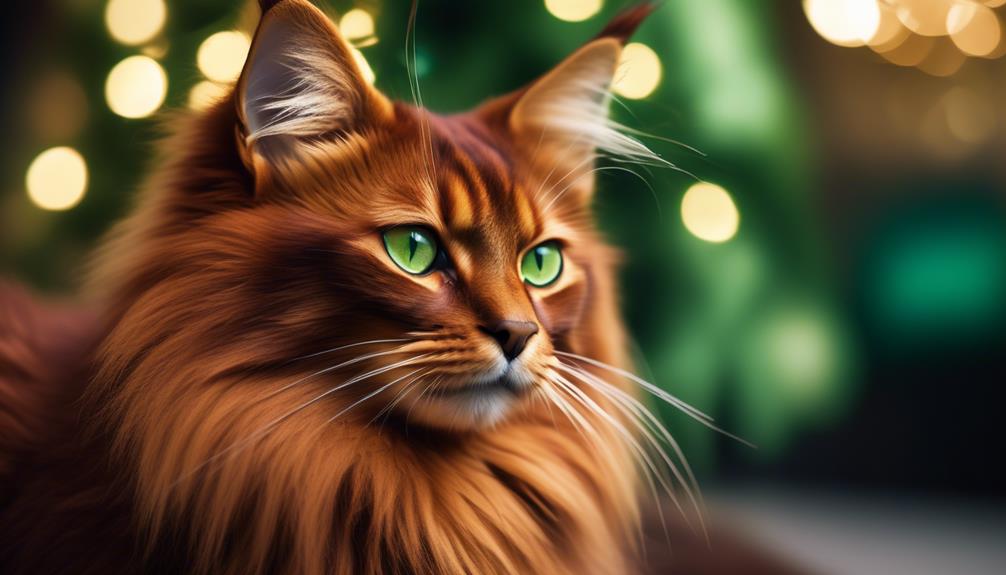
With its intriguing history and captivating appearance, the Somali cat has long been a favorite among cat enthusiasts.
This medium-sized, longhaired breed originated in coastal regions near the Indian Ocean and Southeast Asia, and its intelligence and playful nature make it a popular choice for families.
The Somali cat is truly a sight to behold with its fox-like features, plush coat, and striking ticked pattern.
But there is more to discover about this breed’s origin, size, coat and colors, temperament, and care.
So, if you’re curious to learn more about Somali cat breed information and characteristics, join us as we delve into the fascinating world of these delightful felines.
Key Takeaways
- Somali cats are a medium-sized breed with a silky, medium-long coat that comes in a variety of colors.
- They are intelligent, playful, and loving, making them great companions for families with children and cat-friendly dogs.
- Somali cats require high levels of exercise and moderate grooming, including regular combing, bathing during shedding season, and dental hygiene.
- While generally healthy, Somali cats can be prone to certain genetic health conditions, so choosing a reputable breeder who conducts necessary health screenings is essential.
Origin and Size
The Somali cat, originating from the United States, is a medium-sized breed known for its elegant appearance and playful personality.
This breed was developed from Abyssinian cats with longhaired gene mutations.
The Somali cat typically weighs 6 to 10 pounds, making it a medium-sized breed. Its size and weight contribute to its agility and athleticism.
The Somali cat has a muscular and athletic body with slim legs and oval paws, allowing it to move gracefully and precisely.
Despite its medium size, the Somali cat is known for its ability to jump high and climb quickly.
Its elegant appearance and playful personality make it a popular choice among cat lovers seeking an active and engaging companion.
See another cat breed profile.
Sphynx Cat
Breed Group and Lifespan
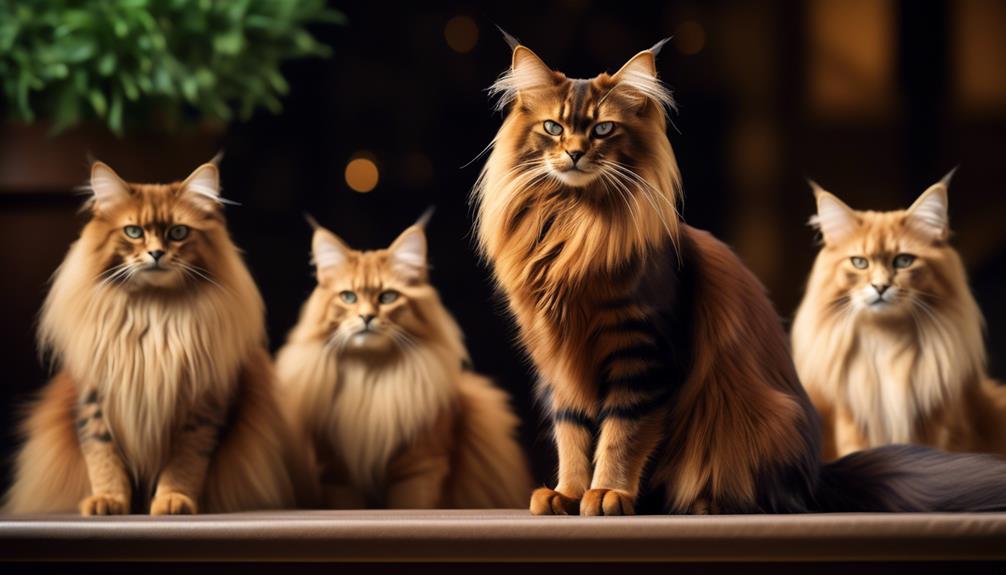
The Somali cat spans 12 to 18 years and is categorized as a longhair breed.
As part of the longhair breed group, the Somali cat is known for its medium-long, silky coat that is ticked with various colors, such as ruddy, sorrel, and blue.
This breed is brilliant, curious, endlessly entertaining, and continuously challenging for its owners.
Somali cats love to be the center of attention and enjoy climbing and exploring their surroundings.
They are suitable for families with children and cat-friendly dogs, as they are social and friendly towards other pets.
With their playful nature and ability to learn tricks quickly, Somali cats have brought joy and entertainment to their owners for many years.
Coat and Colors
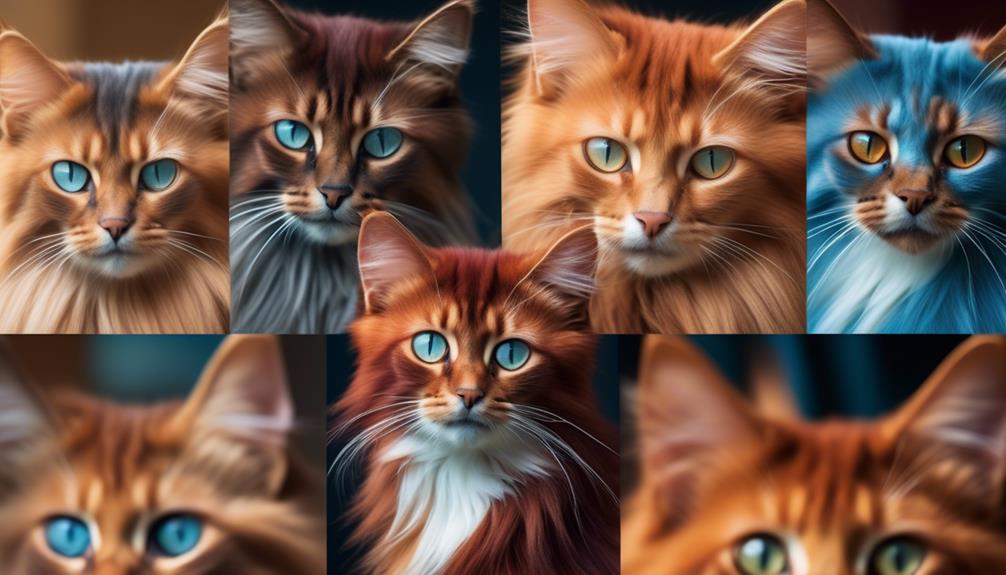
The Somali cat’s coat and colors define this beautiful breed’s characteristics.
Their medium-length hair is soft and silky, with a fine texture. The coat is ticked, meaning each hair has alternating light and dark bands of color.
Four primary coat colors are recognized for the Somali cat: ruddy brown, red, blue, and fawn.
However, some associations permit additional colors. To give you a clearer picture of the Somali cat’s coat colors, here is a table:
| Coat Color | Description |
|---|---|
| Ruddy Brown | Rich, warm brown color with black ticking |
| Red | Deep, vibrant red color with black ticking |
| Blue | Diluted gray-blue color with silver ticking |
| Fawn | Pale, sandy beige color with black ticking |
The Somali cat’s coat colors add to their allure, making them unique among cat breeds.
Temperament and Exercise Needs
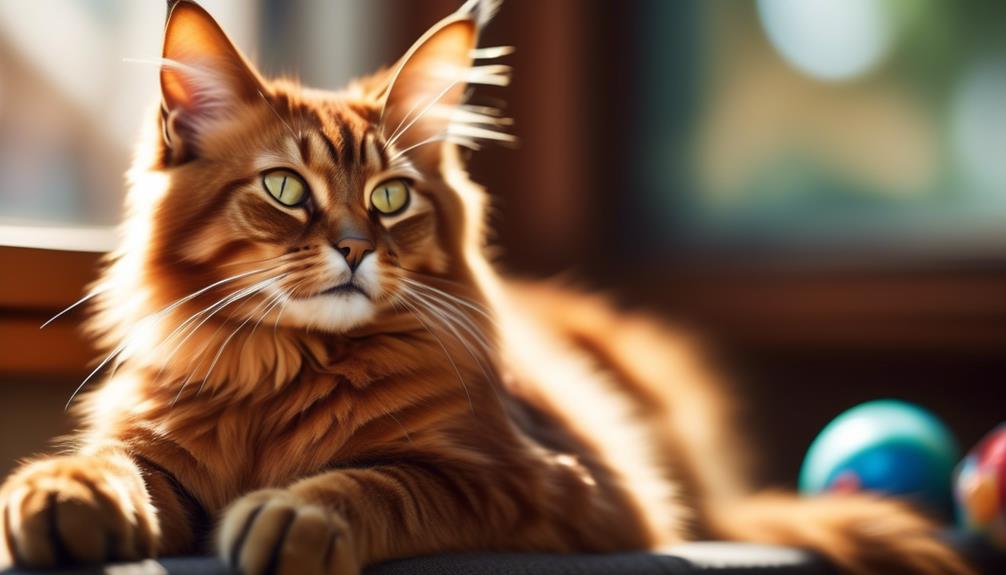
Moving on to the temperament and exercise needs of the Somali cat breed, it is essential to understand their unique characteristics and the level of physical activity they require.
Somali cats are brilliant and curious, endlessly entertaining, and continuously challenging.
They are playful and persistent, always wanting to be the center of attention.
These cats also love climbing and exploring, so providing them with vertical spaces and interactive toys is essential.
Somali cats are suitable for families with children and cat-friendly dogs, as they are social and friendly towards other pets. They can even play fetch and learn tricks quickly.
However, they are smart enough to avoid toddlers and prefer attention from polite and respectful children.
With their energetic personalities, Somali cats require regular exercise to keep them mentally stimulated and physically fit.
Training and Grooming
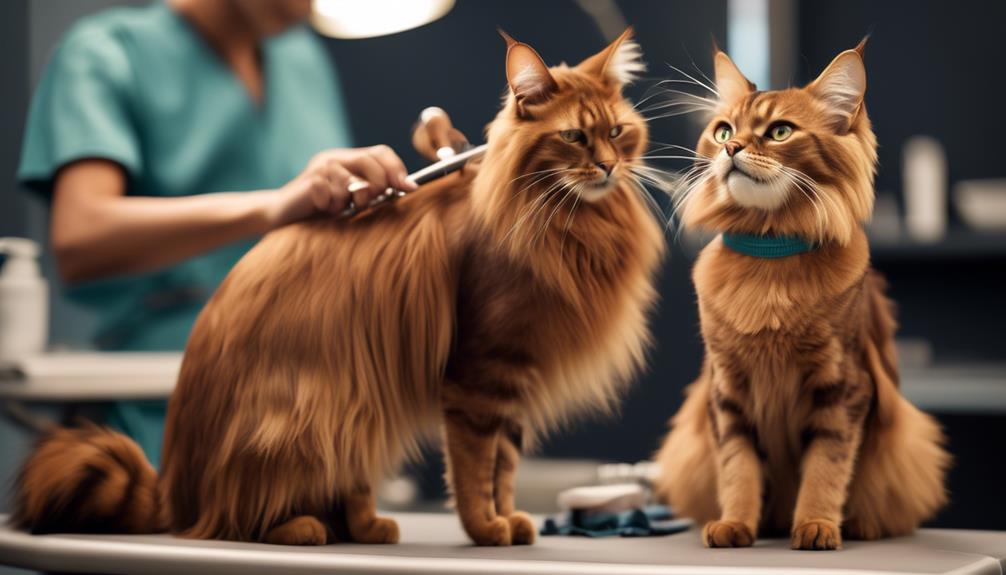
Training and grooming are essential aspects of their overall upkeep to ensure the well-being and proper care of Somali cats.
Training sessions provide mental stimulation and help to strengthen the bond between the cat and its owner.
Somali cats are brilliant and curious, making them easy to train. They enjoy learning tricks and can even play fetch.
Regarding grooming, Somali cats have a medium-length, silky coat that requires moderate maintenance.
Regular combing is necessary to prevent matting and keep their fur in good condition. During the shedding season, bathing may be required to remove excess hair.
Dental hygiene, nail trimming, and eye cleaning should also be part of their grooming routine to ensure their overall health and well-being.
Health Conditions
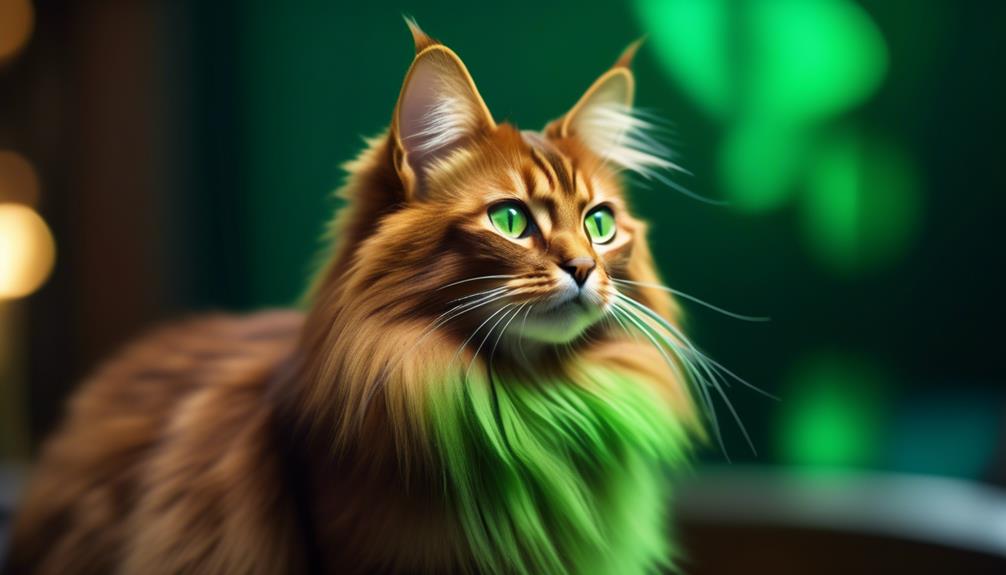
One crucial aspect regarding Somali cats is their susceptibility to certain genetic health conditions.
While Somali cats are generally healthy, there are a few conditions that they may be prone to.
One such condition is progressive retinal atrophy (PRA), a degenerative disease that affects the cat’s retina and can lead to vision loss.
Feline hypertrophic cardiomyopathy (HCM) is another condition that Somali cats may be at risk for, which is a disease that affects the heart muscle and can result in heart failure.
Other health conditions that Somali cats may be prone to include periodontal disease, hyperesthesia syndrome, patellar luxation, pyruvate kinase deficiency (PKD), and renal amyloidosis.
It is essential for Somali cat owners to be aware of these potential health issues and to provide regular veterinary care to ensure their cat’s well-being.
Somali History
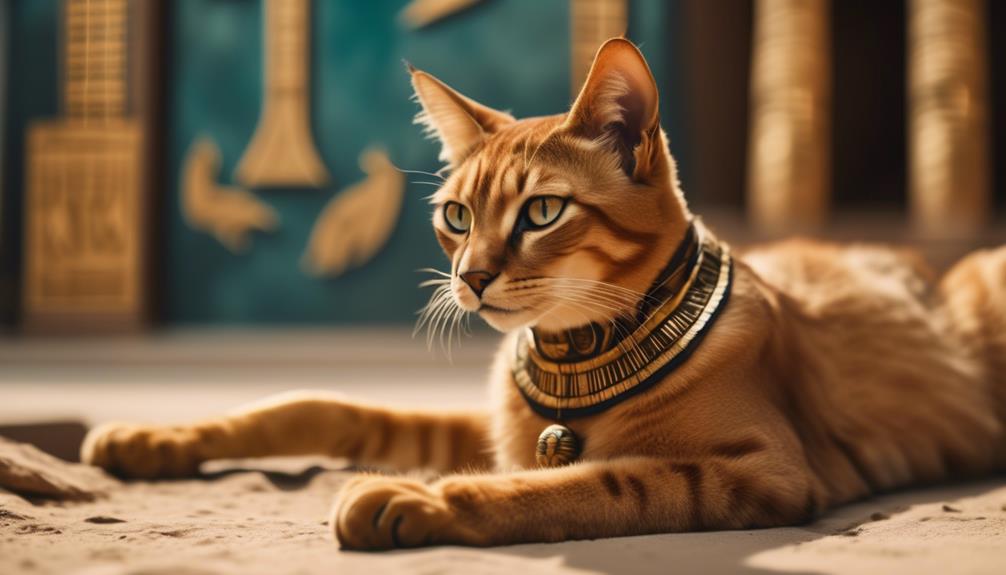
The history of the Somali cat breed can be traced back to its origins in the Indian Ocean coastal regions and parts of Southeast Asia.
Traders may have brought the cats from ports such as Calcutta, India, or the islands of Indonesia.
The breed was first exhibited at the Crystal Palace Cat Show in 1871, marking its first known print mention.
Speculation about the breed’s origins includes myths about being the cat of the pharaohs and being created by crossing silver and brown tabbies with cats with ticked coats.
The rich and varied history of the Somali cat breed adds to its allure and mystique, making it a fascinating and captivating breed for cat enthusiasts.
Cat Show Appearance
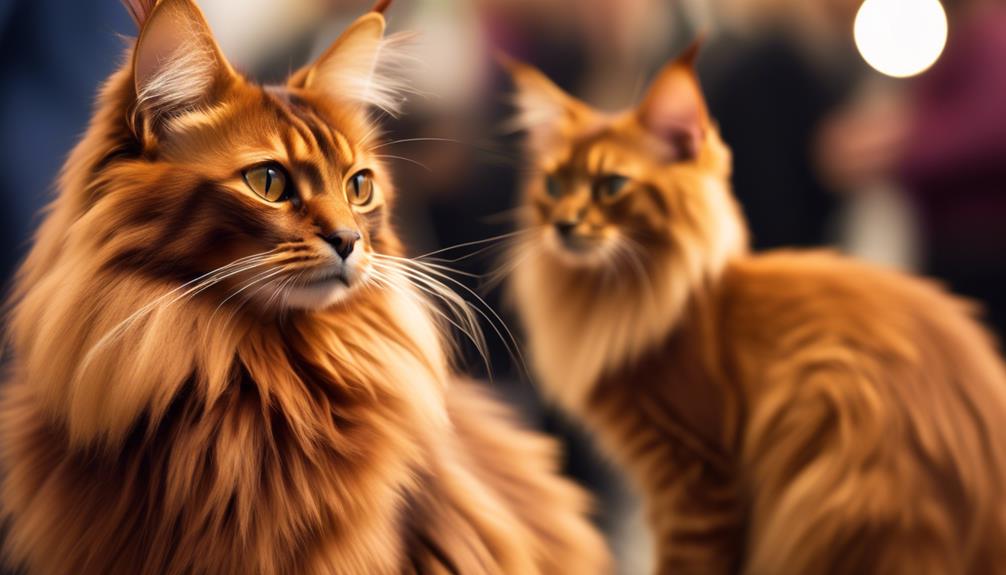
The Somali cat’s captivating appearance distinguishes it at cat shows.
The Somali will catch the judges’ attention with its fox-like appearance and plush coat.
This breed features a slightly rounded wedge-shaped head with large, broad ears that enhance its alert and curious expression.
Its muscular and athletic body, slim legs, and oval paws give it an elegant and graceful appearance.
The Somali’s most distinctive feature is its tick coat, alternating light and dark bands of color.
The medium-length hair has a soft and silky texture, adding to the cat’s overall charm.
While the four primary coat colors are ruddy brown, red, blue, and fawn, some associations permit additional colors.
The Somali’s striking appearance makes it a standout competitor in cat shows.
Origin Myths
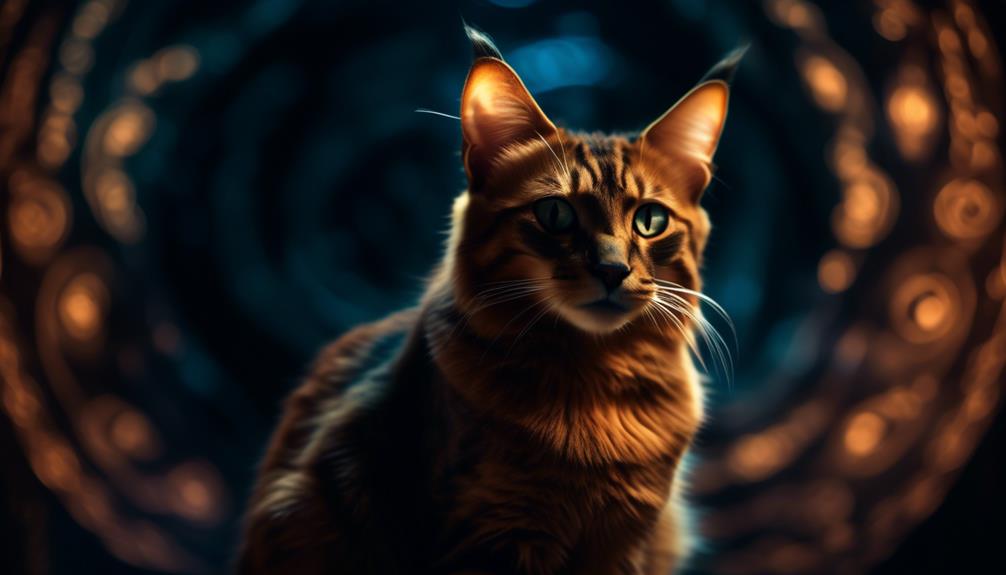
Origin myths surrounding the Somali cat breed have sparked speculation and intrigue among enthusiasts and historians alike.
These captivating stories add an air of mystery to the breed’s history, leaving us to wonder about their origins.
Here are four fascinating origin myths that have captured the imagination of many:
- Myth of the Pharaohs: Some believe that Somali cats were the cherished pets of ancient Egyptian pharaohs. This myth suggests a regal and noble lineage for the breed.
- Myth of Exotic Crossings: According to this theory, Somali cats were created by crossing silver and brown tabbies with cats that had ticked coats. This notion of intentional breeding adds an element of sophistication to their heritage.
- Myth of Faraway Lands: It is speculated that Somali cats were brought from Indian Ocean coastal regions or Southeast Asia by traders. This myth conjures images of exotic lands and adventurous journeys.
- Myth of Divine Creation: In this myth, Somali cats are believed to have been divinely created, their unique beauty and intelligence being a gift from the gods. This myth elevates the breed to a status of divine favor.
While these origin myths may never be fully proven or disproven, they continue to captivate our imagination and add to the allure of the Somali cat breed.
Adoption Recommendations
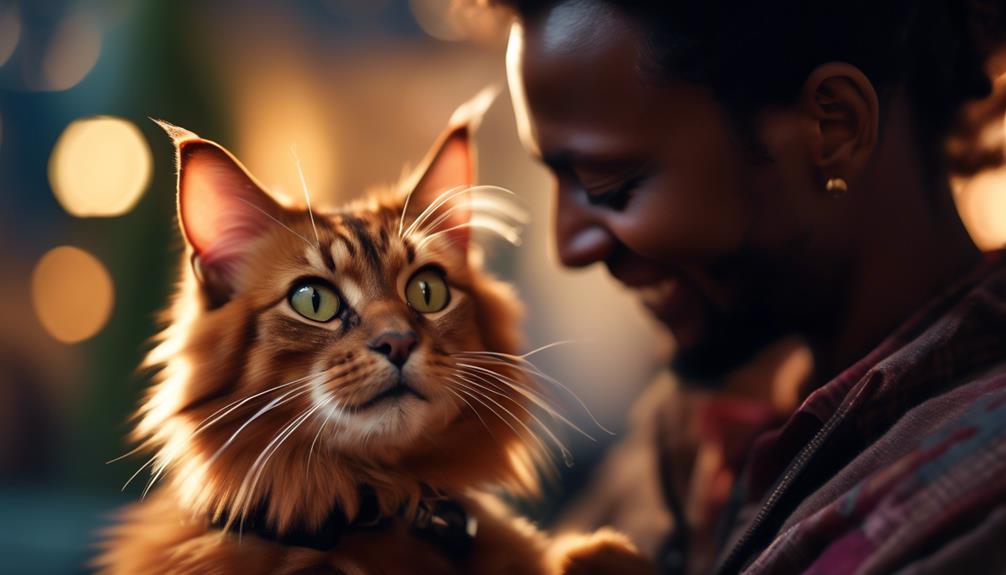
After exploring the intriguing origin myths surrounding the Somali cat breed, it is essential to consider adoption recommendations for those interested in welcoming one of these captivating felines into their home.
Regarding adoption, it is highly recommended to prioritize adopting from rescue organizations or shelters. This allows you to provide a loving home for a cat in need.
However, thorough research is essential if you choose to purchase from a breeder.
Choosing a reputable breeder who prioritizes the health and temperament of their cats.
Reputable breeders conduct necessary health screenings and provide a nurturing environment for the kittens.
Choosing a Reputable Breeder
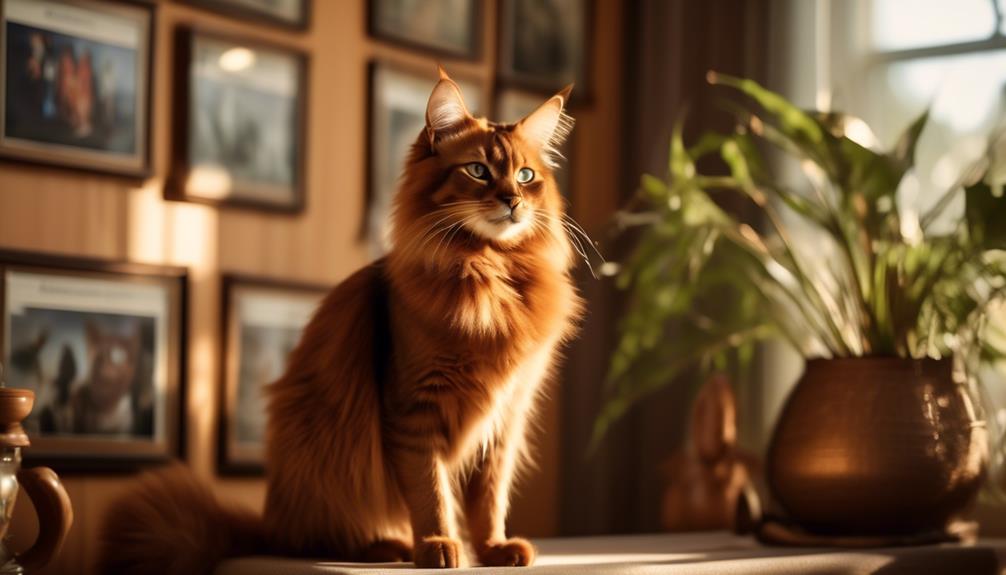
When seeking to bring a Somali cat into your home, it is essential to select a reputable breeder carefully.
Here are four reasons why choosing a reputable breeder is crucial:
- Health and Temperament: Reputable breeders prioritize the health and temperament of their cats. They conduct necessary health screenings to ensure the kittens are free from genetic health conditions. This ensures that you are bringing home a healthy and well-adjusted cat.
- Nurturing Environment: Reputable breeders provide a nurturing environment for the kittens. They are raised in a clean and loving home, which helps them develop into happy and social cats.
- Responsible Breeding Practices: Reputable breeders follow responsible breeding practices, including proper cat care and nutrition. They aim to improve the breed and maintain breed standards.
- Ongoing Support: Reputable breeders offer continuing support and guidance to the new owners. They are available to answer any questions or concerns, ensuring a smooth transition for you and your new furry friend.
Fun Facts
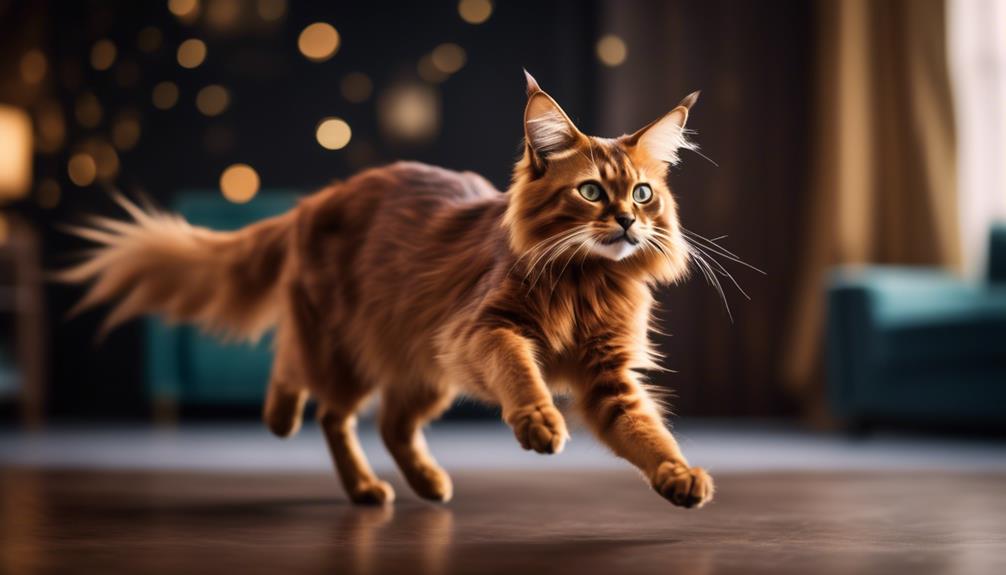
Here are some fascinating facts about Somali cats that will capture your interest.
| Fun Facts about Somali Cats |
|---|
| Errol is an Instagram-famous Somali cat with over 100k followers |
| United States breeder Evelyn Mague is credited with naming the longhaired Abyssinians Somalis |
| Somali cats are not actually from Somalia, but the name is a nod to their relation to the Abyssinian breed |
| Some Somali cats can hold items in their paws |
| Somali cats have a fox-like appearance with a plush coat |
Somali cats have gained popularity not only for their striking appearance but also for their unique characteristics.
Errol, an Instagram sensation, has captivated the hearts of over 100k followers.
Additionally, Evelyn Mague, a breeder from the United States, named the longhaired Abyssinians as Somalis. Although their name suggests a connection to Somalia, they are related to the Abyssinian breed.
Another interesting fact is that some Somali cats can hold items in their paws. With their fox-like appearance and plush coats, Somali cats stand out among other breeds.
Somali Care and Personality
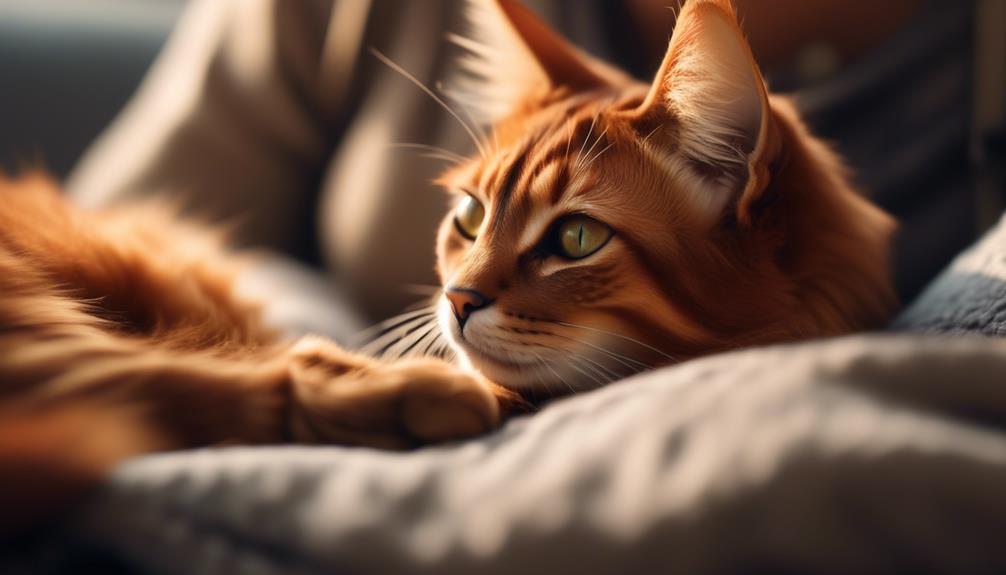
What are the critical aspects of caring for and understanding the personality of Somali cats?
Here are four essential points to consider:
- Provide mental and physical stimulation: Somali cats are brilliant and curious, so keeping them mentally and physically stimulated is crucial. Interactive toys, puzzle feeders, and regular playtime will help prevent boredom and destructive behavior.
- Give them plenty of attention: Somali cats love being the center of attention and crave human companionship. Set aside daily time for cuddles, play, and bonding to fulfill their social needs.
- Encourage their instincts: Somali cats are playful and persistent. Please provide them with climbing structures, scratching posts, and puzzle toys to satisfy their instincts and keep them entertained.
- Create a harmonious environment: Somali cats are social and friendly towards other pets but also appreciate a peaceful and calm environment. Ensure they have a quiet space to retreat when they need some alone time.
Physical Characteristics
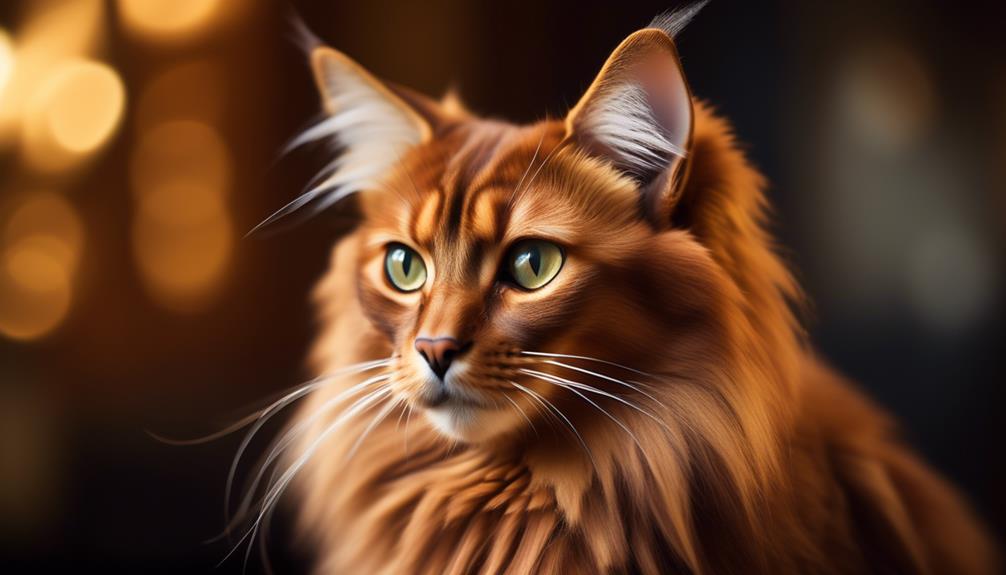
Moving on to the physical characteristics of Somali cats, it is essential to understand their distinctive features and appearance.
Somali cats have a fox-like appearance with a plush coat. They have a slightly rounded wedge-shaped head with large, broad ears set high on their head.
Their eyes are almond-shaped and come in amber, green, or gold shades.
Somali cats have a muscular and athletic body with slim legs and oval paws. They have a full brush tail and a ruff around the neck, adding to their regal and elegant appearance.
Their medium-length hair is soft and silky with a fine texture, and it comes in four primary coat colors: ruddy brown, red, blue, and fawn. Some associations also allow additional colors.
Frequently Asked Questions
Are Somali Cats Hypoallergenic?
No, Somali cats are not hypoallergenic. While they have a beautiful coat, their hair still produces allergenic proteins that can trigger allergies in sensitive individuals.
Regular grooming and cleaning can help reduce allergens.
How Often Should Somali Cats Be Bathed?
Somali cats should be bathed every few months or as needed.
However, they are fastidious groomers and usually keep themselves clean. Regular brushing, nail trimming, and dental hygiene are more important aspects of their grooming routine.
Do Somali Cats Require a Specific Diet?
Yes, Somali cats do require a specific diet.
It is recommended to feed them a high-quality cat food formulated for their particular needs, such as one rich in animal protein and low in fillers or artificial additives.
Can Somali Cats Be Left Alone for Long Periods?
Like all cats, Somali cats are independent by nature and can handle short periods of alone time.
However, they are social creatures and thrive on human interaction, so leaving them alone for long periods is not recommended.
Are Somali Cats Prone to Obesity?
Somali cats are not generally prone to obesity.
However, providing them with a balanced diet and regular exercise is essential to maintain their health and prevent weight gain.
Proper portion control and interactive playtime can help keep them at a healthy weight.
Conclusion
In conclusion, the Somali cat is a unique and captivating breed known for its intelligent and playful nature.
Somali cats are a sight with their fox-like appearance, plush coats, and striking ticked pattern.
They thrive in an environment that provides mental and physical stimulation, making them an ideal choice for families with children and cat-friendly dogs.
Somali cats can make beautiful additions to any family by prioritizing adoption from rescue organizations or reputable breeders and providing proper care and grooming.




